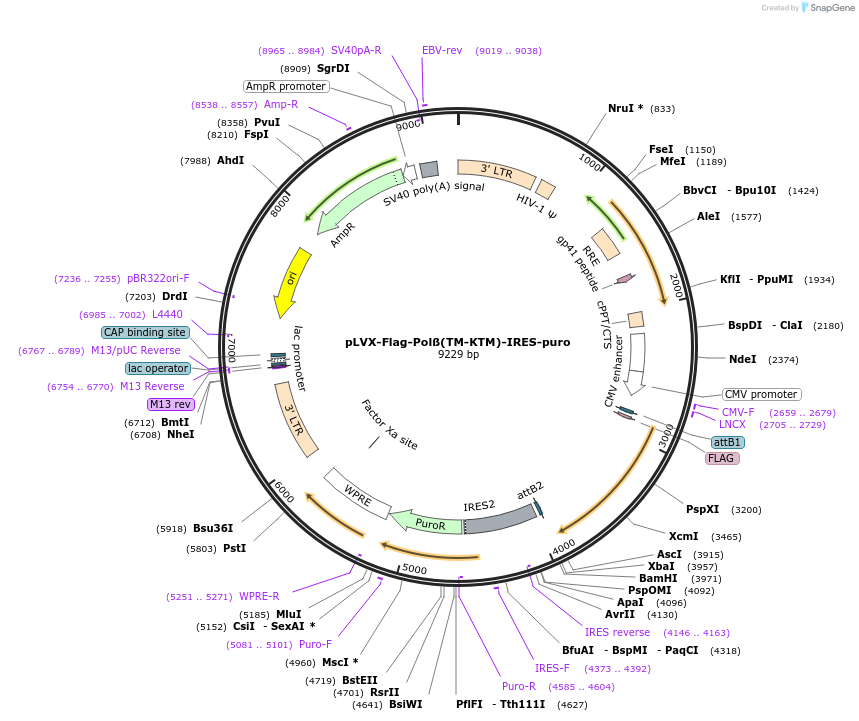pLVX-Flag-Polß(TM-KTM)-IRES-puro
(Plasmid
#128676)
-
Purposemammalian expression of Flag-Polß(TM-KTM: L301R/V303R/V306R-K41R/K61R/K81R) protein with puromycin selection
-
Depositing Lab
-
Sequence Information
Ordering
| Item | Catalog # | Description | Quantity | Price (USD) | |
|---|---|---|---|---|---|
| Plasmid | 128676 | Standard format: Plasmid sent in bacteria as agar stab | 1 | $89 | |
Backbone
-
Vector backbonepLVX-GWE-IRES-puro
- Backbone size w/o insert (bp) 8247
- Total vector size (bp) 9279
-
Vector typeMammalian Expression, Lentiviral
-
Selectable markersPuromycin
Growth in Bacteria
-
Bacterial Resistance(s)Ampicillin, 100 μg/mL
-
Growth Temperature37°C
-
Growth Strain(s)NEB Stable
-
Copy numberUnknown
Gene/Insert
-
Gene/Insert namePolB
-
Alt nameDNA polymerase beta
-
SpeciesH. sapiens (human)
-
Insert Size (bp)1038
-
MutationL301R/V303R/V306R/-K41R/K61R/K81R
-
GenBank IDNM_002690
-
Entrez GenePOLB
- Promoter CMV
-
Tag
/ Fusion Protein
- Flag (N terminal on insert)
Cloning Information
- Cloning method Gateway Cloning
- 5′ sequencing primer M13-forward for pENTR vector
- 3′ sequencing primer M13-Reverse for pENTR vector
- (Common Sequencing Primers)
Resource Information
-
Supplemental Documents
Terms and Licenses
-
Academic/Nonprofit Terms
-
Industry Terms
- Not Available to Industry
Trademarks:
- Zeocin® is an InvivoGen trademark.
These plasmids were created by your colleagues. Please acknowledge the Principal Investigator, cite the article in which the plasmids were described, and include Addgene in the Materials and Methods of your future publications.
-
For your Materials & Methods section:
pLVX-Flag-Polß(TM-KTM)-IRES-puro was a gift from Robert Sobol (Addgene plasmid # 128676 ; http://n2t.net/addgene:128676 ; RRID:Addgene_128676) -
For your References section:
HSP90 regulates DNA repair via the interaction between XRCC1 and DNA polymerase beta. Fang Q, Inanc B, Schamus S, Wang XH, Wei L, Brown AR, Svilar D, Sugrue KF, Goellner EM, Zeng X, Yates NA, Lan L, Vens C, Sobol RW. Nat Commun. 2014 Nov 26;5:5513. doi: 10.1038/ncomms6513. 10.1038/ncomms6513 PubMed 25423885



